In the first half of the 20th century, bow ties were just as common as long neckties as a classic style neckwear option. So, why did they fall out of favor? Well, let’s put a bow on things and find out.
- 1. Bow Ties Emphasize Horizontal Lines
- 2. Bow Ties Can Look Odd Against Expansive Shirt Fronts
- 3. Bow Ties Are Commonly Associated with Formality
- 4. Bow Ties Require One More Knot to Learn
- 5. Butterfly Bow Ties Are Believed To Be The Only Type Of Bow Tie
- 6. Bow Ties are Believed to be a Statement Piece
- 7. Bow Ties Have Some Negative Cultural Associations
- Conclusion
- Outfit Rundown
- FAQ
If you’re interested in why men started wearing bow ties in the first place, we cover that history in our separate guide to bow ties.
Bow Tie Guide
1. Bow Ties Emphasize Horizontal Lines
Believe it or not, the way that the bow tie draws the eye may have contributed to its downfall. The silhouette and lines of your clothing and accessories massively impact how your entire frame is perceived. For most of the Golden Age of Menswear, the inverted-V silhouette was favored, emphasizing broad shoulders and a slim waist. This silhouette was created by the interplay between vertical or largely vertical lines like diagonally descending lapels and horizontal lines like those of a bow tie.
Starting in the 1960s, a new focus was placed on overall slimness, and to aid in this slimness, vertical lines were more exclusively favored. This can be seen in things like suits cut closer to the body, narrower jacket lapels, and an increasing reliance on the conventional long necktie.
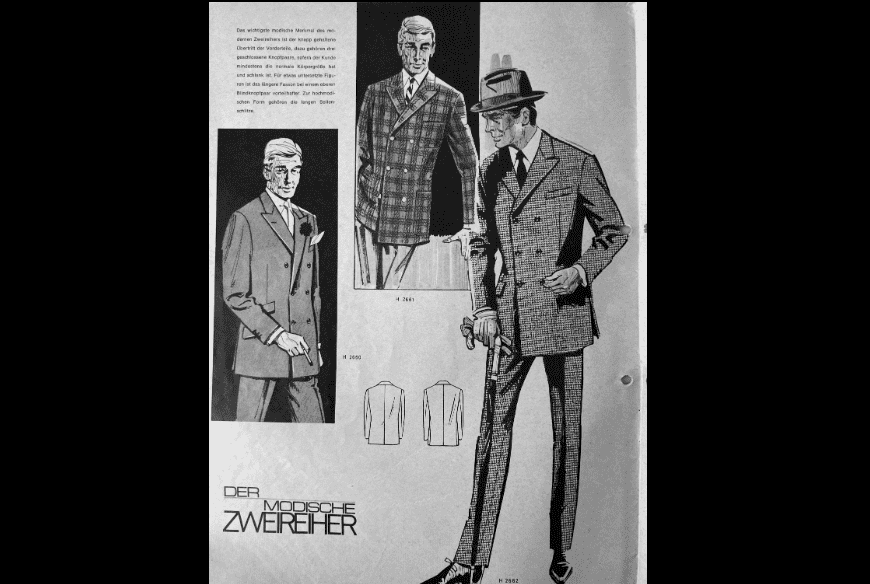
So, it may be that bow ties fell out of favor because they create a horizontal line and emphasized width at a time when height and length alone were favored. And while menswear has gone through several more phases where slimness has been in or out of style, even since the 1960s, this overall preference for vertical lines has still remained.
2. Bow Ties Can Look Odd Against Expansive Shirt Fronts
The second reason why men stopped wearing bow ties is because they can look odd against an expansive shirt front. As the modern suit has evolved, the amount of shirtfront on display under the jacket has increased considerably.
This is due to the decreasing popularity of jackets that show less of the shirt front, like double-breasted or three-button styles, fewer men wearing waistcoats, and changing button stances of two- or one-button jackets. Men these days are also more often wearing their jackets unbuttoned and wearing them with lower-rise trousers. All of this, then, is going to show off more of the shirt front.
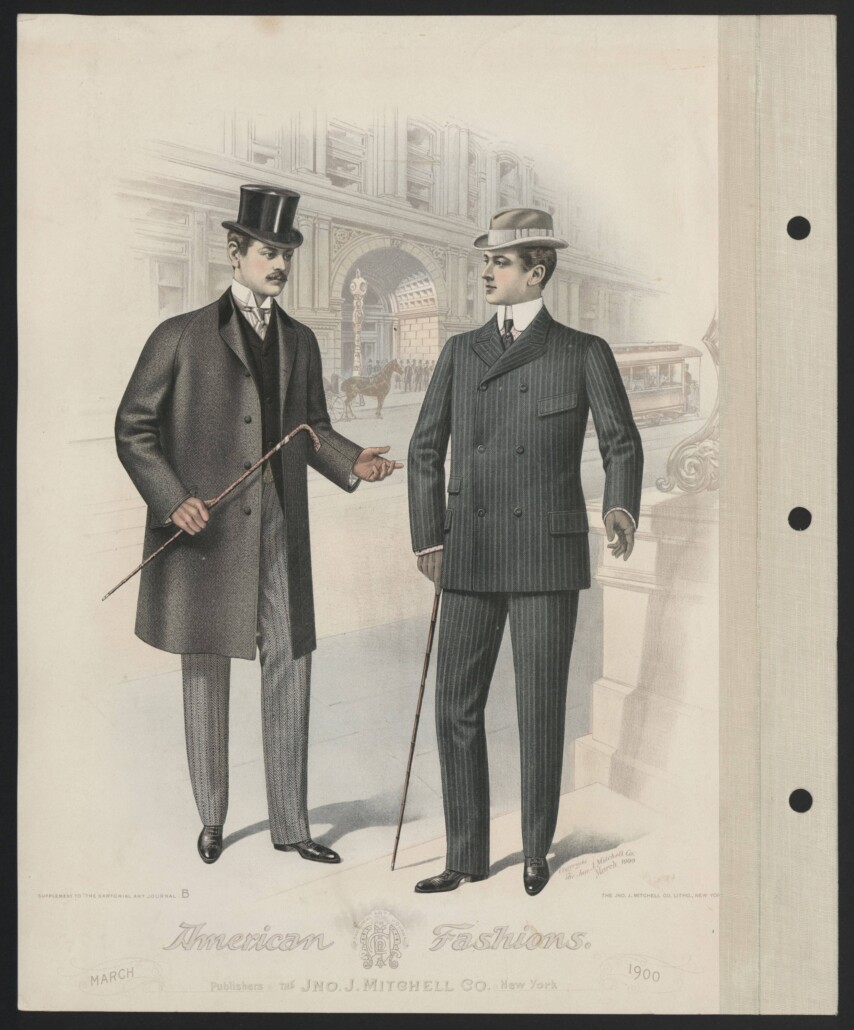
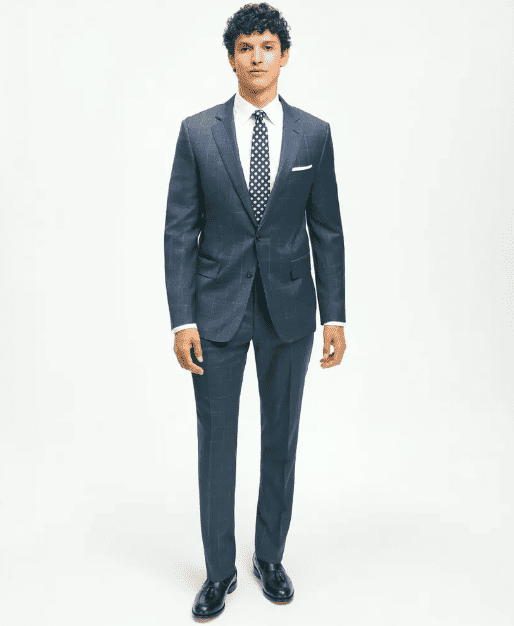
So, this broad expanse of a shirt front, especially when it’s solid in color and free of pattern, can look a little empty, vacant, and boring when paired with a bow tie. Meanwhile, the length of a necktie is more likely to fill this visual space in these circumstances.
As men are wearing fewer garments that cut down on the negative space of shirt fronts like double-breasted jackets or waistcoats, it aided in the perception that bow ties can be dull and boring. The reality is, though, that ensembles featuring bow ties are only going to appear boring under certain circumstances, and it is very easy to dress in such a way as to integrate a bowtie successfully into your look.
Why Did Men Stop Wearing Waistcoats (Vests)?
3. Bow Ties Are Commonly Associated with Formality
The third reason why men stopped wearing bow ties is that they’re commonly associated with formality.
When most men think of bow ties, they quickly think of formal wear. After all, the names of the two most formal dress codes for men are White Tie and Black Tie, and as we often try to emphasize, this does mean bow ties and not long neckties.
As central components of formal evening attire, it does make some sense that bow ties would be considered more formal than long neckties; and even if menswear enthusiasts understand that there is a difference between a formal black or white bow tie for evening wear and a daywear bow tie, this distinction could be lost on the layman.
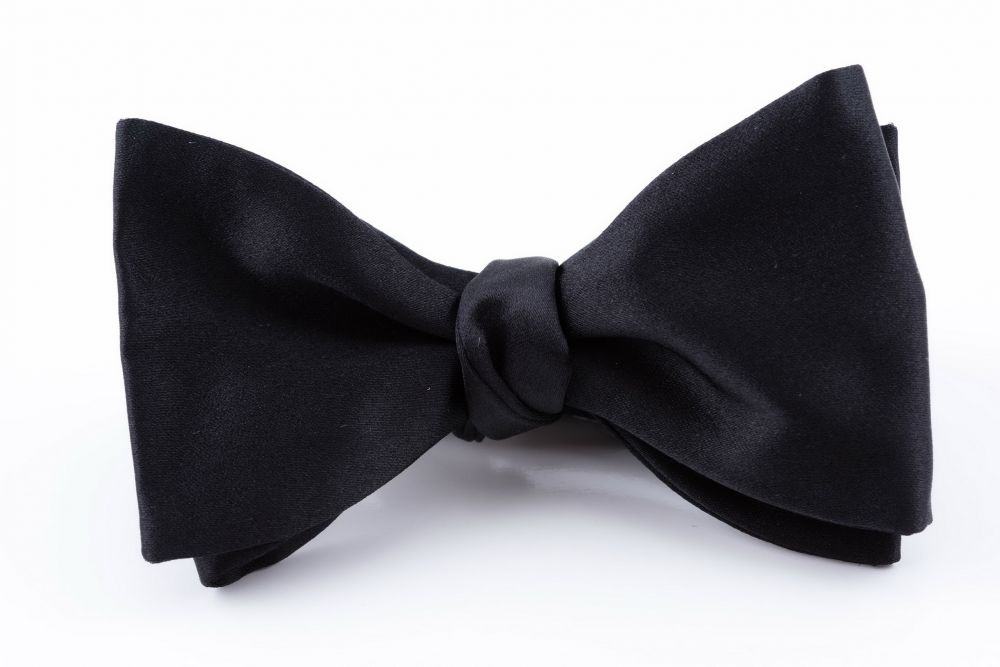
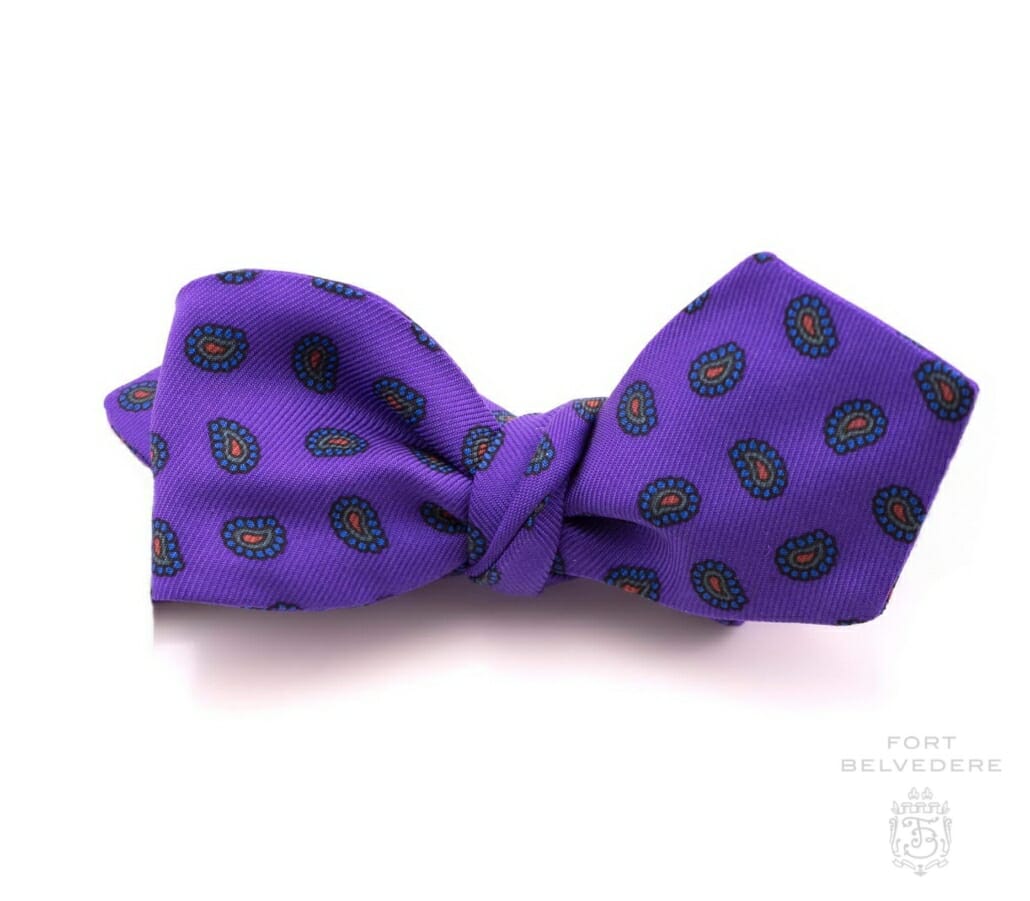
Aside from dress codes, though, there are also innate aspects of the bow tie that can make it inherently more formal. A long necktie can be styled in a casual way fairly easily by doing things like loosening the knot or wearing the narrow blade longer than the wide blade. But, a bow tie doesn’t really have equivalents to this, and we wouldn’t really recommend trying to start the trend of a loosely knotted bow tie. And while Daniel Craig’s James Bond could get away with loosely dangling bow tie ends as part of his tuxedo, this is a look that appears affected or disheveled on most men.
James Bond’s Best Looks – Our Favorite 007 Outfits, Reviewed
Basically, unlike a necktie, which can be styled in accordance with how loosely it’s tied, a bow tie is either tied or not tied and, therefore, somewhat formal or extremely casual. Of course, some bow ties are less form than others, and a more casual appearance can be created by using things like the fabric, color, pattern, or texture of the bow tie. But, in general, bow ties are going to be considered a bit more formal than long neckties and, therefore, less versatile; and frankly, in today’s increasingly casual world, the perceived formality of bow ties can then be a nonstarter in and of itself.
4. Bow Ties Require One More Knot to Learn
Next on our list is number four: bow ties require one more knot to learn. For the vast majority of men, the necktie is the gold standard for neckwear, so when it came time to learn how to wear neckwear, they simply had to learn one necktie knot (most likely the Four in Hand) and perhaps one or two more knots if they were feeling adventurous.
Of course, menswear enthusiasts know that there are as many as 85 different ways to knot a conventional necktie, but that’s in our ties playlist. And in a time when men are increasingly abandoning neckwear altogether, as we already covered in a previous installment of this series, it can seem silly to learn one more knot in learning how to tie a bow tie.
Why Did Men Stop Wearing Ties (Long Neckties)?
In other words, if you already know how to tie a necktie, isn’t learning how to tie a bow tie just one more knot to learn?
It could also seem like a waste of time to learn how to tie a bow tie, given that most men only wear bow ties on very formal occasions these days anyway. This then has contributed directly to the increasing popularity of the pre-tied bow tie, and with how convenient pre-tied bow ties appear to the layman, they have also likely contributed to the declining popularity of bow ties as well. However, to the discerning eye, a pre-tied bow tie is just going to look off. It will look stiff, rigid, and too perfect with its entirely symmetrical construction and a knot that looks fake because it usually is. So, while we said earlier that a bow tie shouldn’t be loosely tied, it should still be genuinely tied to provide some personality to the knot.
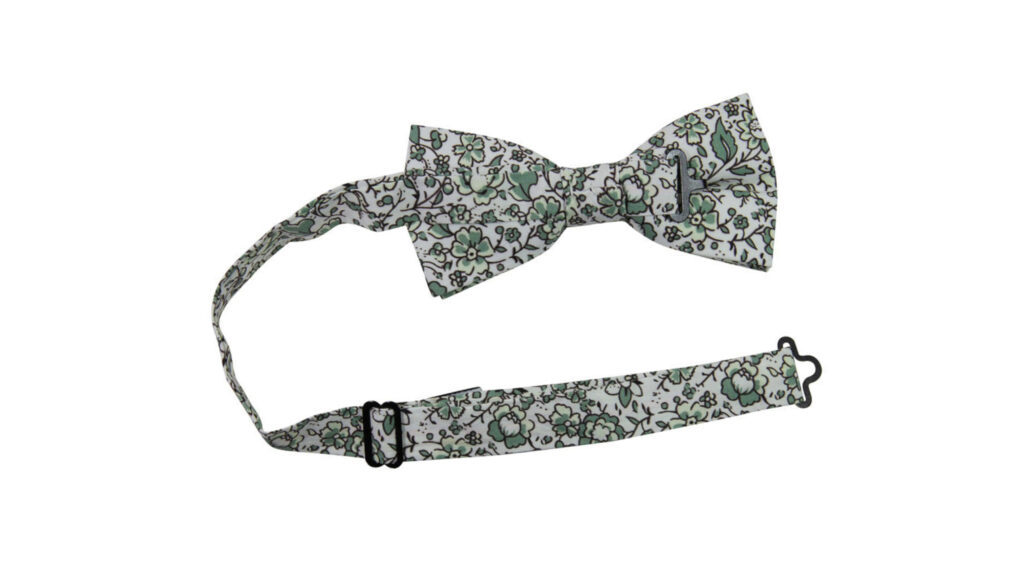
Phrased another way, pre-tied bow ties are representative of many of the same issues that we find with rental tuxedos. These are both things that should ideally be unique and fitted to you but, instead, are now mass-produced and artificial. And if you’re wearing something that wasn’t made for you or at least something that doesn’t harmonize with your own personal style, it can look off as though you’re wearing a costume.
So, it may be that the boring, stiff, and unnatural appearance of pre-tied bow ties has also created some guilt by association with self-tied bow ties. In reality though, a self-tied bow tie should appear organic and beautiful, and as we illustrate in our other guide, it really isn’t all that hard to learn how to tie one once you get some practice in.
How To Tie A Bow Tie
5. Butterfly Bow Ties Are Believed To Be The Only Type Of Bow Tie
The fifth reason why men have stopped wearing bow ties is because the butterfly style is believed by many men to be the only type of bow tie.
During the Golden Age of Menswear, when bow ties were in their heyday, there were almost as many types of bow ties as there were types of gentlemen. Bow ties came in various sizes, lengths, and styles like single-ended, diamond-ended, or batwing bows, but with the countercultural revolution of the 1960s, and especially into the 1970s, the butterfly bow tie, which had once been just one option among many, became ubiquitous.
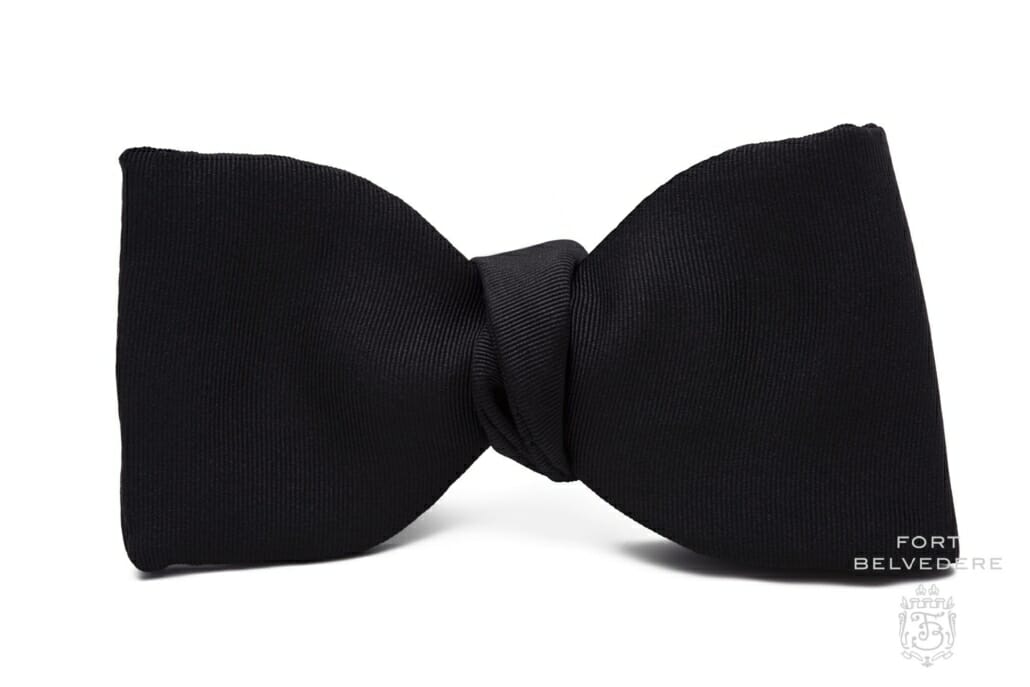
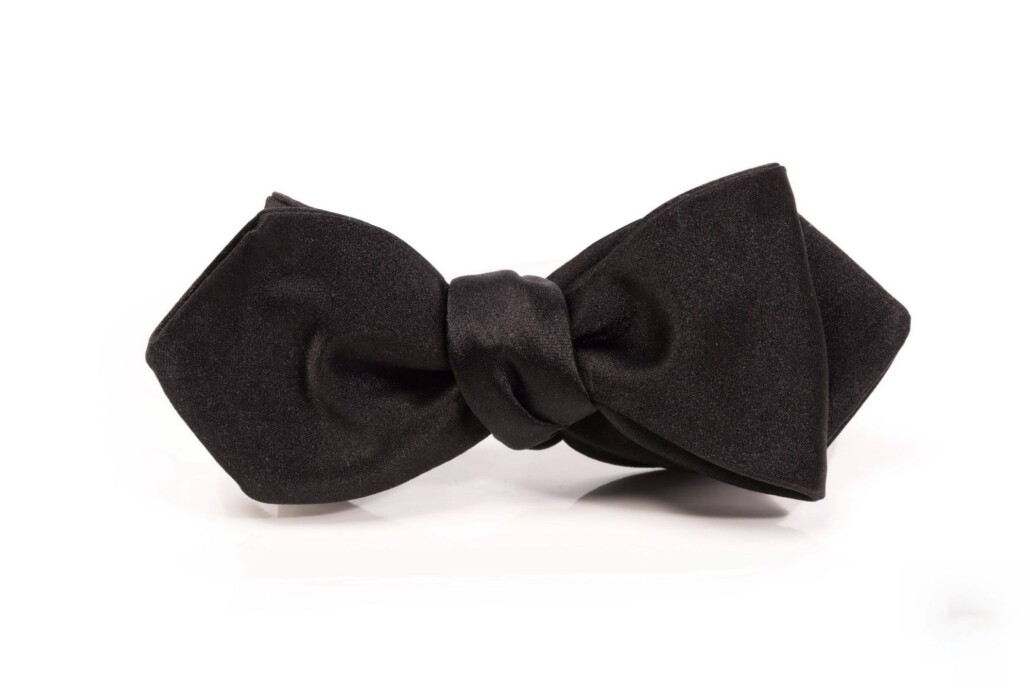
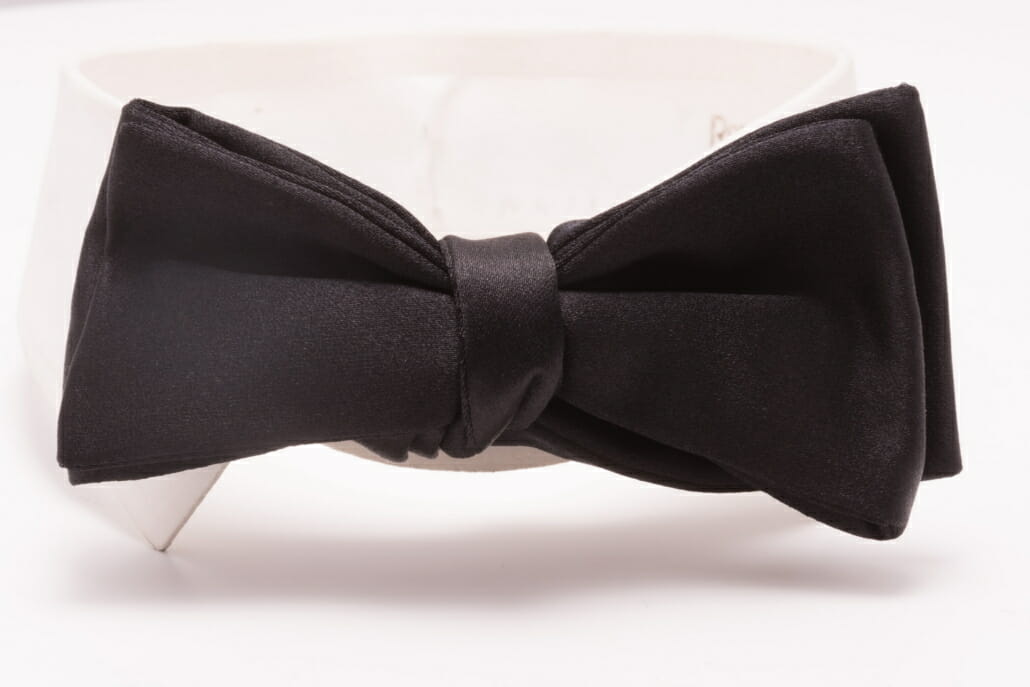
This was likely due to the fact that this shape could be further exaggerated to better fit in with the “bigger is better” mentality of the time period. The result was a fad for butterfly bow ties with gigantic drooping ends, and while they appeared modish when they first came on the scene, they quickly became caricatures and outdated.
While the 1980s saw a backlash against many of the fashion trends of the 1970s and certain garments like striped shirts or double-breasted jackets were revived in the 80s, the bow tie wasn’t so lucky, and the perception that the only style of bow tie that existed was the massive butterfly stuck around.
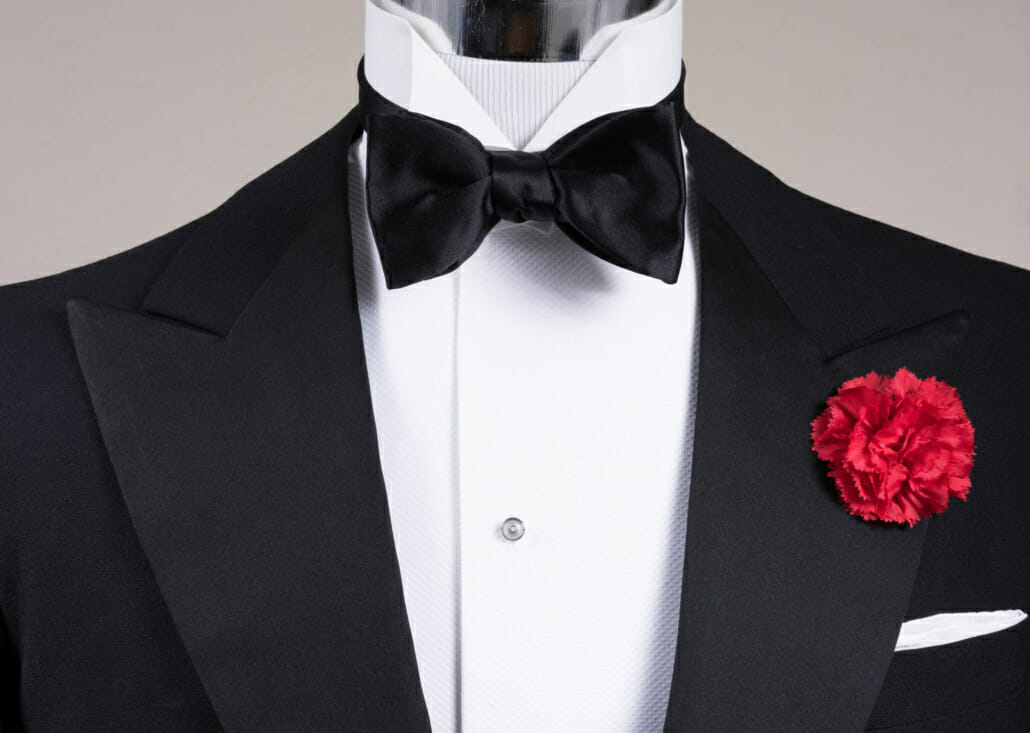
As a result, too many men, even today, assume that the butterfly bow tie is their only option, and because the butterfly doesn’t suit every face shape, many men erroneously believe that bow ties as a whole aren’t for them. In reality, though, there’s a bow tie style out there to highlight and complement every face shape.
6. Bow Ties are Believed to be a Statement Piece
The penultimate item on our list today is number six, which is that bow ties are believed to be a statement piece.
As bow ties became increasingly rare in menswear, a perception developed that the long necktie was the standard neckwear choice and bow ties were somehow special by comparison. This perception certainly wasn’t widespread in the 1930s or 40s, but it was developing by the 70s and 80s and is certainly dominant today. So, some men avoid wearing a bow tie because they think it is innately a statement piece.
This perception probably wasn’t helped by the fashion-forward detailing of bow ties seen in the hipster craze of the 2010s. You can think of bow ties made from unusual materials like wood or feathers to fall into this category.
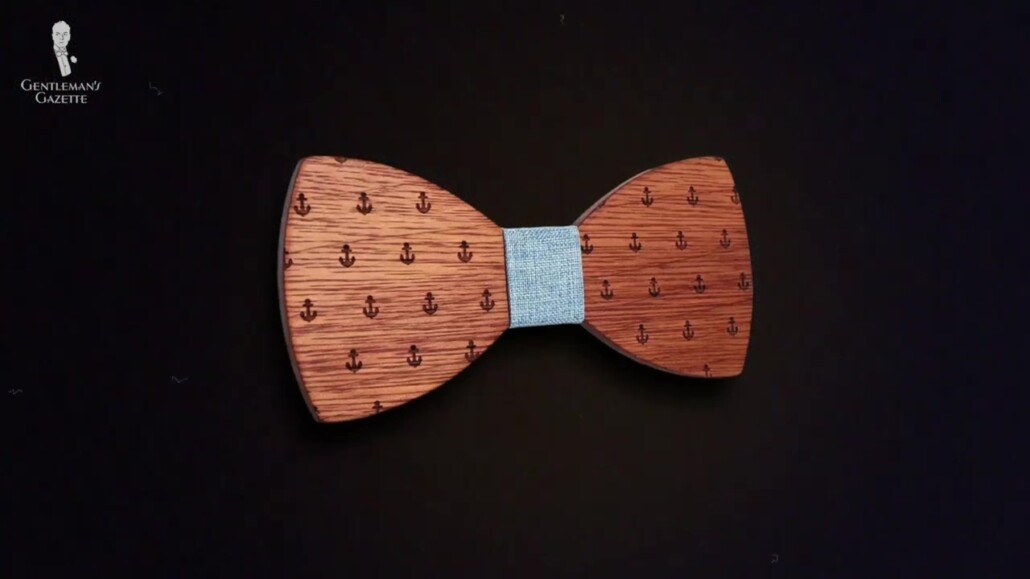
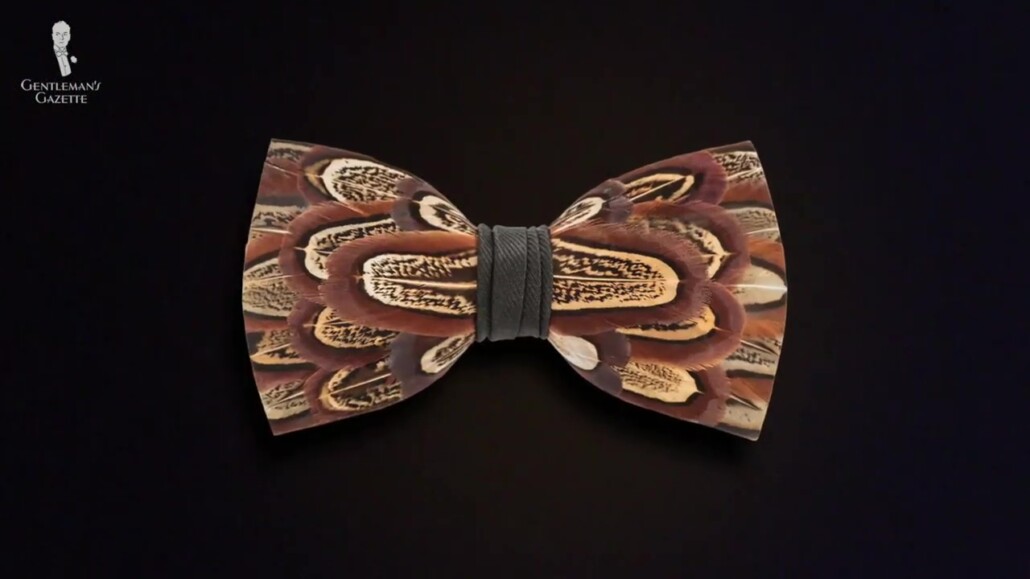
As an aside here, we are not saying that bow tie styles like these are somehow bad, just that they’re not strictly classic. If you’d like to wear them, go for it, but know that they don’t fall into that strictly classic menswear aesthetic.
On the other hand, many men who have chosen to wear a bow tie have made them a personal statement piece and a distinct part of their aesthetic. These men swing the pendulum completely in the other direction, eschewing long neckties entirely and collecting a massive stockpile of bow ties, which they wear exclusively.
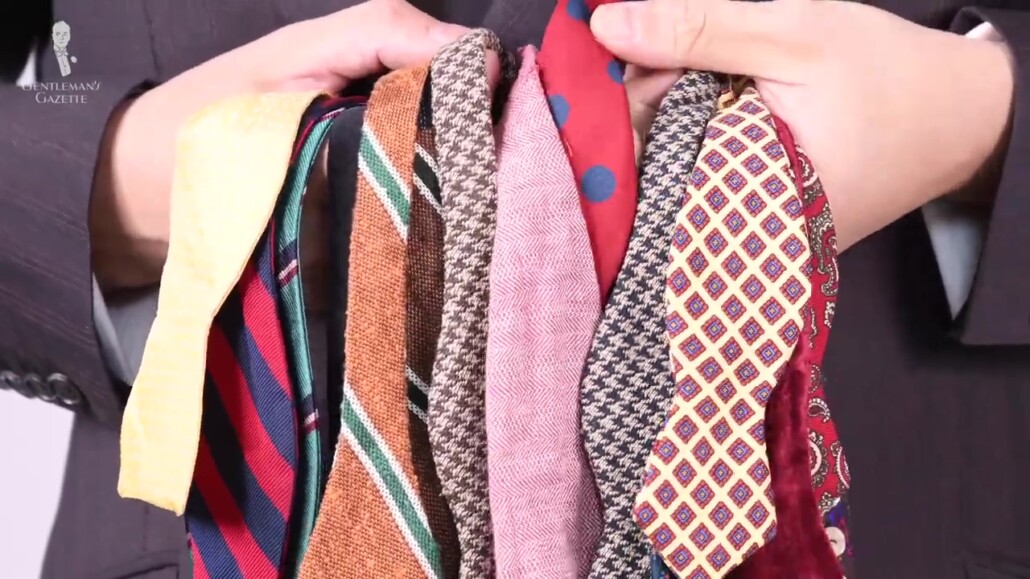
This fervent dedication to the bow tie then leads other men to assume that if they start wearing bow ties, they might find themselves down the path to becoming a “bow tie guy.” In reality, though, bow ties can, of course, be worn as just one option in a rotation of all different kinds of neckwear. And the fact that some men embrace them so fully should only be proof of just how stylish a bow tie can be.
7. Bow Ties Have Some Negative Cultural Associations
The final reason on our list today of why men stopped wearing bow ties is that they have developed some negative cultural associations.
As bow ties fell out of general favor, they became increasingly associated with certain specific groups, leading the general public to believe that if they wore a bow tie, they themselves would be associated with these groups.
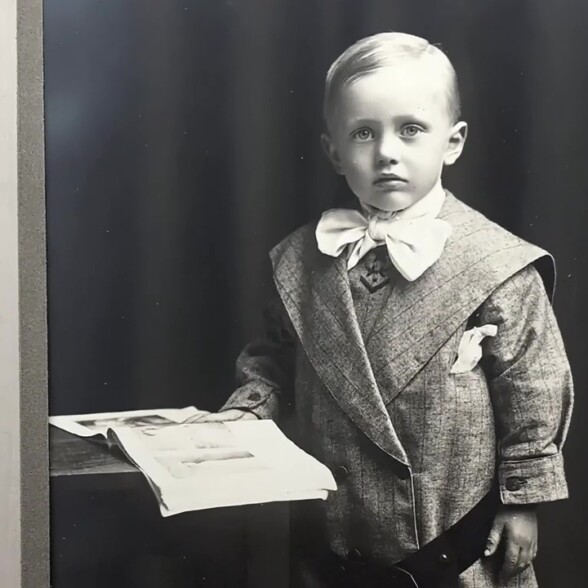
Bow Ties Are
Often Worn by Children
Children, in particular, have long been associated with bow ties. This is partly because bow ties were less likely to get caught on things when young boys were playing outside, and many school uniforms adopted bow ties as well. Bow ties are also typically associated with children’s media, like cartoons, comic books, or clowns.
Many adults these days do enjoy cartoons or comic books, but it shouldn’t be controversial to say that, fundamentally, comics were created to appeal to children. So, given that many adults prefer not to be associated with things they see as juvenile, it stands to reason that men who did not want to project a juvenile appearance might avoid bow ties.
How to Dress Your Age: Balancing Style with Maturity
Somewhat ironically, because bow ties were more popular in the past, they are also seen today as being old-fashioned or even historical. Many modern men are only going to see bow ties when they watch period television shows or movies or worn by older men who are still dressing in accordance with the conventions of their younger years, and when fashion is youth-oriented and obsessed with the new, you can see why men might avoid bow ties if they don’t want to look outdated. Perhaps precisely because they are often considered old-fashioned or associated with more historical viewpoints, bow ties are often adopted by academics or pundits with conservative beliefs.
This, in turn, has fed into a belief that there must be something inherently conservative or even reactionary about the bow tie itself; and, politics aside, bow ties are also associated with academics more broadly, especially scientists and mathematicians.

Many theories abound as to why bow ties have become associated with the scientific community. It could be that, unlike long neckties, bow ties are less likely to droop down into a petri dish or vat of chemicals or get caught in a spinning centrifuge, and it could also be that bow ties appear more put together under a high-buttoning lab coat. It’s also telling that many of society’s most famous scientists grew up or were active during the early to mid-20th century, a time when bow ties were still generally more common.
Whatever the reason may be, then, the connection established between bow ties and scientists led, in turn, to another connection between bow ties and nerds or other individuals considered uncool.
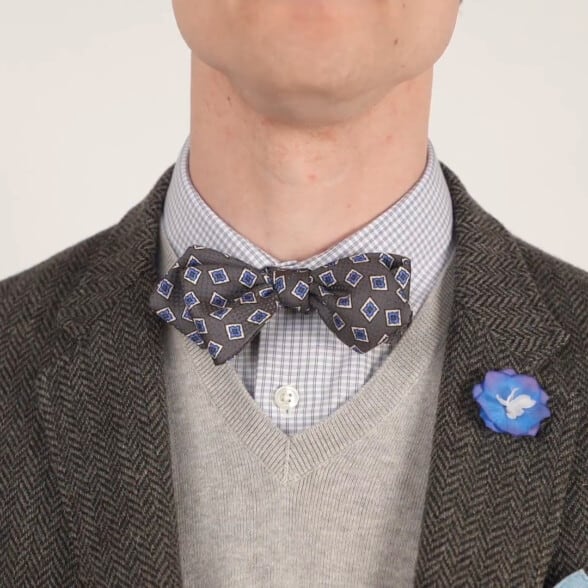
everyone who wants to
Can pull off a bow tie!
While it is helpful to be generally aware of the societal conventions or perceptions surrounding a garment, you should never let stereotypes dictate whether or not you consider wearing something. If everyone from old school boys to Arthur from Peaky Blinders to Whovians can rock a bow tie, that just means that you probably can, too.
Conclusion
So, while bow ties may have fallen out of favor for the general public, there’s no reason that it has to stay that way. We already have several guides on how to integrate a bow tie into your personal classic style look, and we’d suggest you start with the essential bow ties we think every gentleman needs.
11 Bow Ties Every Man Should Have
Do you wear bow ties? If so, how do you style them, or is there something preventing you from wearing them? Let us know in the comments below, and if there are any other reasons that men stopped wearing bow ties that you think we missed today, let us know about those as well, and we can tie up those loose ends.
Outfit Rundown
Today, I am, of course, wearing an outfit that features a bow tie. This one is a vintage silk model from the brand Robert Talbott, featuring a Macclesfield Neats geometric pattern in colors of orange, blue, green, and light yellow or buff.
To harmonize with this color palette then, I’m wearing a French-cuffed shirt from Charles Tyrwhitt, featuring a Prince-of-Wales check pattern in yellow and blue on a white ground. I have vintage gold cufflinks inserted into those French cuffs that also feature a pattern vaguely reminiscent of a bow.
My navy blazer, also featuring gold buttons, is double-breasted and, therefore, shows off less of my shirt front to harmonize better with the bow tie. My trousers are in a light khaki or stone color that also harmonizes with the yellow tones in my outfit, and my shoes are medium brown, cap-toed Oxfords from Allen Edmonds.
The fragrance I’m wearing today is Old English Classic Cologne from the brand D. R. Harris. Its citrus-forward scent has me thinking ahead to spring, which isn’t far away at the time we’re producing this post, and the green label also happened to harmonize with elements in my outfit.
Speaking of which, my pocket square is a prototype design for Fort Belvedere in a mint or light lime green color and featuring a blue X-stitch. We don’t currently offer this exact color in our shop, but other colors in our handcrafted linen range include yellow and blue among others.
My remaining accessories are also from Fort Belvedere. They include my Edelweiss boutonniere and two-toned, shadow-striped socks in navy blue and yellow, which harmonize with other elements of my outfit.
So, for the socks and boutonniere I’m wearing, as well as a wide array of other classic men’s accessories, including bow ties, corduroy trousers, and fragrances from the Roberto Ugolini collection, you can take a look at the Fort Belvedere shop.
FAQ
What is the history behind bow ties?
Bow ties date back to the 17th century, originating from Croatian mercenaries who used neckwear to hold together the collars of their shirts. This evolved into the cravat and eventually, in the 19th century, into the bow tie we are familiar with today.
When were bow ties most popular?
Bow ties saw a surge in popularity during the 1920s to the 1940s, particularly as a component of formal attire. They were a staple accessory for evening events and were often associated with a certain level of sophistication and intellect.
Why have bow ties become less common?
Bow ties have become less common in everyday fashion due to several factors:
- Changes in Fashion Trends: Just like any other fashion item, bow ties are subject to the ebb and flow of trends. Currently, there is a preference for more casual and relaxed styles.
- Perceived Formality: Many people consider bow ties too formal for daily wear, reserving them for black-tie events, weddings, or certain professional settings.
- Association With Specific Professions or Characters: Bow ties have been stereotypically associated with academics, doctors, lawyers, and classic movie characters, which can make them feel like a costume rather than a fashion choice.
- Ease of Use: Tying a bow tie requires skill, and the convenience of pre-tied versions or alternative neckwear like regular ties could be why they’ve fallen out of favor.
Are bow ties completely out of style?
Not at all. Bow ties are still popular in formal attire and continue to be worn by those wishing to make a bold fashion statement. They have also retained their place within certain professional circles and at specific events.
Can bow ties make a comeback?
Fashion is cyclical, so bow ties could very well see a resurgence in popularity as new generations rediscover and reinterpret vintage styles for modern wear.
How can I incorporate a bow tie into my wardrobe?
- Choose the Right Occasion: Reserve bow ties for formal events, themed parties, or when you want to add a touch of personality to your outfit on special occasions.
- Experiment with Patterns and Fabrics: There are many designs available, from silk to wool, and an array of patterns. Pick one that complements your style.
- Learn to Tie One: The art of tying a bow tie adds to its charm. Learn how to tie one properly for an authentic look.
Match Your Attire: Ensure your bow tie fits with the rest of your ensemble both in terms of color scheme and formality.


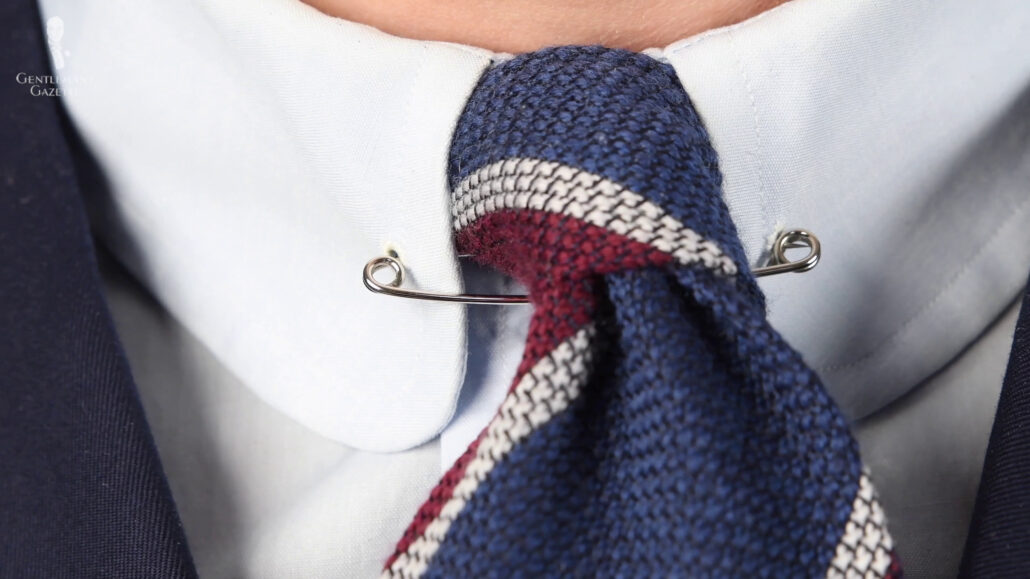
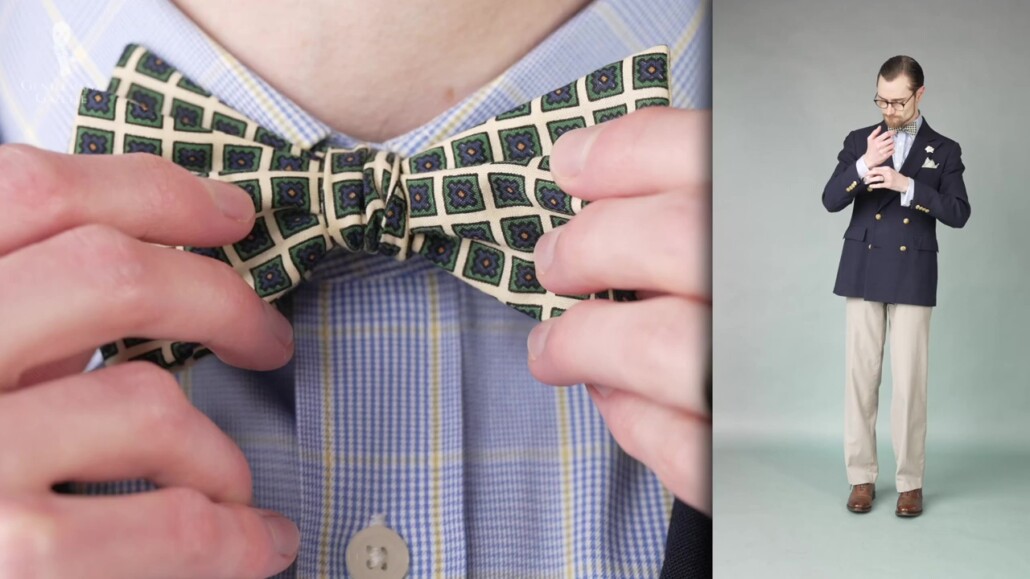
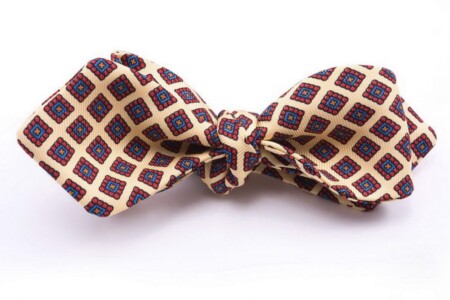

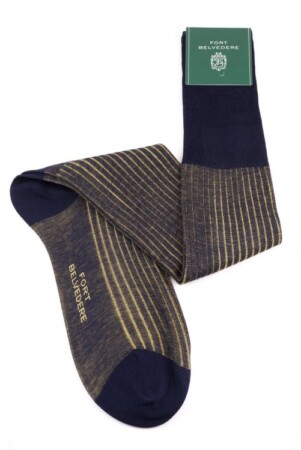
I like my bow ties and have a modest collection of them in various shapes and colors/patterns. As mentioned in the article, being seen in one once tends to label you as “the bow tie guy”. My sisters seemed to think all I had was bow ties and I received a few pre-tied ones (they meant well) from them as presents (that were immediately handed down to my sons).
There are times when the size/shape of a bow tie is just what you need, and it’s a good thing to be able to bust one out in those situations. I particularly like them for celebratory occasions and musical performances. And then there are times when a necktie is more appropriate (funerals, for instance).
#8 Rise of ultra casual wear. Ultra casual wear is without question the most ubiquitous dress. Even for events such as weddings where dressing up was a non-negotiable, it’s becoming the norm to tone down the formality with jeans and even sweats. And more clothing companies are trying to introduce performance fabric (as opposed to wool, flannel, linen or even cotton) into typically more formal outfits such as the lounge suit to give wearers (when they occasionally get suited up) the feeling of wearing athleisure wear. With the rise of casual wear, suits, blazers and sports jackets (garments one typically accessorises with neckwear whether bow ties or neck ties) comes dressing down their formality; it’s becoming more and more common to wear a t-shirt and leather sneakers, a hoodie and sneakers or occasionally (in the case of fashionistas) nothing beneath the jacket. Wearing a dress shirt without neckwear is seemingly becoming the new semi-formal or even formal.
I like wearing bowties. They certainly speak out in a crowd. There’s a sense of conservatism and give character to a man.
Bow ties are more informal than a long tie and are certainly more jaunty. It is very hard to spill food on a bow tie saving on dry cleaning. They aren’t hard to tie either. If you happen to wear one in London you will get nailed as American right away.
I was shocked to see this article pop up! I know that men normally wear ties to events nowadays and find myself even a wearer of such on formal events, but my friend Ben wears bowties and vests every single day and just looks so incredibly dapper! It must have started a trend in my area, because now my friends and I commonly wear bowties whenever we go out to events together. It just seems like such a complimentary piece, and we always appear the most fashionable in the room in my opinion. However, the idea that they faded out because we show off more of our shirts now makes so much sense. We always wear our bowties with vests, and whenever I don’t have a vest I am almost always wearing a tie. But, I would say that a simple black or white bow tie really does compliment a patterned shirt, even without the vest.
Wonderful to hear that bow tie wearing is commonplace among you and your friends, Adam – thank you for sharing!
Unfortunately, here in the D.C. area (where everything is politics) to wear a bow tie is often (generally) seen as self-identifying as a conservative. That is an unfortunate perception, in my view, but there it is.
Greetings,
A bow tie looks great with a tuxedo.
However, with a suit or sports coat, I always wear a traditional necktie.
Outside of formal wear, a bow tie strikes me as an affectation.
Since we are in an era that tolerates gentlemen to wear no neckwear at all, arguing about bow ties is just a notch above counting deck chairs on the “Titanic.”
Best regards,
Andrew Gregg,
Palm Springs, California.
I tend to agree although I think Raphael and Preston pull it off very well. You’re not wrong there about tolerating no neckwear. I find myself cringing seeing people (mostly on TV but sometimes out in public) dressing down suits with a t-shirt and sneakers. Even wearing a dress shirt under a suit is seen as being dressed up with dress shirts or really any kind of shirt with a collar and buttons (except maybe a polo shirt) being seen as today’s equivalent of morning dress or white tie in Australia.
Thank you for an excellent explanation! I have worn bow ties throughout my teaching career.
It’s our pleasure, Toby! Happy to hear from a bow tie aficionado